Synthetic Rubber
Synthetic rubber is a man-made alternative to natural rubber, which is derived from the latex of rubber trees. It is produced through the polymerization of various petroleum-based monomers. Synthetic rubber has a wide range of uses, including in the production of tires, hoses, belts, and seals.
Types of Synthetic Rubber
There are several types of synthetic rubber, each with its own unique properties and applications:
- Styrene Butadiene Rubber (SBR): SBR is the most commonly used synthetic rubber and is used in the production of tires, conveyor belts, and shoe soles.
- Polybutadiene Rubber (BR): BR is known for its high resilience and is often used in the manufacturing of tires and industrial goods.
- Neoprene Rubber: Neoprene is resistant to oil, heat, and weathering, making it suitable for applications such as gaskets, hoses, and wetsuits.
- Nitrile Rubber (NBR): NBR is oil-resistant and is commonly used in the production of seals, gaskets, and fuel hoses.
- Butyl Rubber: Butyl rubber has excellent impermeability to gases and is used in tire inner tubes, seals, and adhesives.
Properties of Synthetic Rubber
Synthetic rubber exhibits properties that make it suitable for various applications:
- Elasticity: Synthetic rubber can stretch and return to its original shape, making it ideal for use in products that require flexibility.
- Chemical Resistance: Depending on the type, synthetic rubber can be resistant to oil, chemicals, and weathering, making it suitable for diverse environments.
- Heat Resistance: Certain types of synthetic rubber can withstand high temperatures without deforming or breaking down.
- Weather Resistance: Some synthetic rubbers are resistant to degradation from exposure to sunlight, ozone, and varying weather conditions.
Study Guide
To better understand the topic of synthetic rubber, consider the following study guide:
- Research the history of synthetic rubber and its development over time.
- Compare and contrast the properties of synthetic rubber with those of natural rubber.
- Investigate the production processes of different types of synthetic rubber, including the monomers used and the polymerization methods.
- Examine the environmental impact of synthetic rubber production and explore efforts to develop environmentally friendly alternatives.
- Discuss the various applications of synthetic rubber in different industries and the specific properties that make it suitable for each use.
- Conduct experiments or demonstrations to illustrate the properties of synthetic rubber, such as its elasticity, chemical resistance, and heat resistance.
By engaging with these study guide topics, you can gain a comprehensive understanding of synthetic rubber and its significance in various fields.
.◂Science Worksheets and Study Guides Fifth Grade. The 6-Kingdoms of life
Study Guide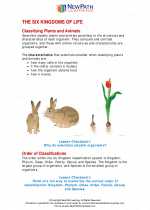 The 6-Kingdoms of life
The 6-Kingdoms of life  Activity Lesson
Activity Lesson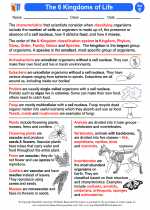 Kingdoms
Kingdoms  Worksheet/Answer key
Worksheet/Answer key The 6-Kingdoms of life
The 6-Kingdoms of life  Worksheet/Answer key
Worksheet/Answer key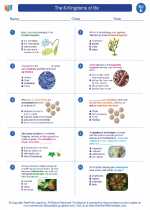 The 6-Kingdoms of life
The 6-Kingdoms of life  Worksheet/Answer key
Worksheet/Answer key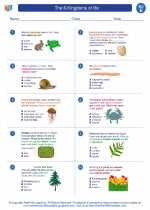 The 6-Kingdoms of life
The 6-Kingdoms of life  Worksheet/Answer key
Worksheet/Answer key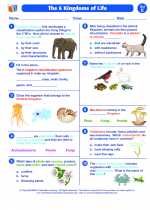 The 6-Kingdoms of life
The 6-Kingdoms of life  Vocabulary/Answer key
Vocabulary/Answer key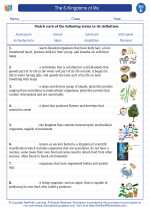 The 6-Kingdoms of life
The 6-Kingdoms of life  Vocabulary/Answer key
Vocabulary/Answer key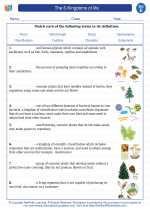 The 6-Kingdoms of life
The 6-Kingdoms of life  Vocabulary/Answer key
Vocabulary/Answer key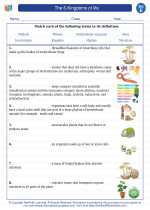 The 6-Kingdoms of life
The 6-Kingdoms of life  Vocabulary/Answer key
Vocabulary/Answer key The 6-Kingdoms of life
The 6-Kingdoms of life 

 Activity Lesson
Activity Lesson
 Worksheet/Answer key
Worksheet/Answer key
 Worksheet/Answer key
Worksheet/Answer key
 Worksheet/Answer key
Worksheet/Answer key
 Worksheet/Answer key
Worksheet/Answer key
 Vocabulary/Answer key
Vocabulary/Answer key
 Vocabulary/Answer key
Vocabulary/Answer key
 Vocabulary/Answer key
Vocabulary/Answer key
 Vocabulary/Answer key
Vocabulary/Answer key

The resources above cover the following skills:
Concepts of Life Science (SC1, SC2, SC3)
The student demonstrates an understanding of the structure, function, behavior, development, life cycles, and diversity of living organisms by identifying and sorting animals into groups using basic external and internal features.